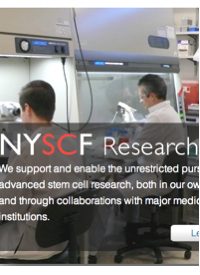
Genetic scientists at the New York Stem Cell Foundation lab claimed a major breakthrough in early October, reporting that for the first time they had used cloning techniques to produce embryonic stem cells which contain the genes of specific individuals. “The cells weren’t normal,” the Los Angeles Times explained — ”they contained three sets of chromosomes: two from the adult cell and an extra from the egg. They would not be fit for use in stem cell therapies.” Nonetheless, continued the report, the controversial creation “marked a first in stem cell research and may point the way toward treatments for diseases such as diabetes, Alzheimer’s or Parkinson’s.”
One fellow stem cell researcher, Lawrence Goldstein of the University of California-San Diego, applauded the news, telling the Washington Post: “I think it will teach us a lot of how to control the generation of all the different cell types that we would like to study and use for therapy. I think it’s a really exciting development.”
But Daniel P. Sulmasy, a professor of medicine and ethics at the University of Chicago, pointed out that the researchers were toying with human life, a troubling reality. “They have created human embryos,” Sulmasy told the Washington Post. “They are abnormal, but they are still human embryos. Anyone who is opposed to the deliberate creation and destruction of human embryos, as I am, would be opposed to this research.”
One expert on stem cell research, Dr. David Prentice of the Family Research Council, told LifeNews.com that in addition to being highly unethical, the research was, in reality, “decidedly underwhelming.” Prentice explained that while the scientists “did get human cloned embryos,” because the “the embryos and cells were triploid, containing half again as many chromosomes as normal,” they were of little value. “They have no clinical use,” he said, “and will also be relatively useless for laboratory studies because as was noted in the study, the cells accumulated numerous additional mutations once placed into cell culture.”
A particularly troubling aspect of the story was the news that the scientists had actually paid women for the 270 eggs that they harvested for the research, “a practice that has been forbidden by ethical guidelines from scientific organizations around the world,” reported the Los Angeles Times. “Some ethicists have argued that paying women for their eggs might create an exploitative trade.”
The Times noted that in order to avoid “exerting undue influence on the donors, the New York team paid [the women participants] $8,000 for the time and burden of donation (which does pose risks), then allowed them to decide later if they wanted their eggs to be used for research or for reproduction.”
One medical ethicist, Jan Helge Solbakk of the University of Oslo, applauded that approach, saying that it “represents the first step towards acknowledging women as genuine participants — co-producers even — in the generation of new knowledge.”
But Marcy Darnovsky of the Center for Genetics and Society in Berkeley, California, took the researchers to task for exposing the women participants to the acknowledged danger that came with harvesting their eggs. “This new form of research cloning … still represents a highly speculative approach to stem cell research,” Darnovsky said in a statement from her organization. “We should not put the health of young women at risk, especially to get raw materials for such exploratory investigations.”
Prentice told LifeNews.com that the “creation of any human embryo by cloning technology, and the wanton destruction of a human embryo for experiments, is morally reprehensible. Add to this the solicitation of women with cash incentives to undergo egg harvesting, risking their health, and this is a technique replete with ethical problems. Meanwhile, adult stem cells are successfully and ethically treating thousands of patients, yet are ignored as the real solution in regenerative medicine.”
Photo: New York Stem Cell Foundation website



